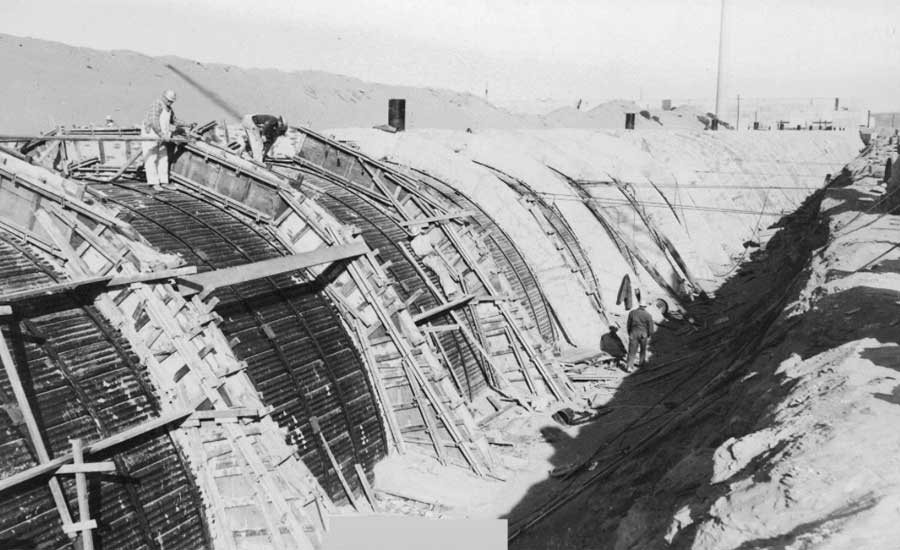It’s early morning May 9, 2017, on Southeast Washington’s Hanford nuclear reservation. A small crew working outside the shuttered Plutonium Uranium Extraction plant detects an ever-so-slight increase in background radiation. Not enough to cause alarm; just to pique their curiosity.
Looking around, they find part of the roof of an underground storage tunnel collapsed. The tunnel stores highly radioactive waste.
That sets off the alarms.
Within minutes, the entire 586-square-mile site locks down. Thousands of workers shelter in place — their Tweets, texts and emails alerting the world to a potentially catastrophic event on one of the nation’s most dangerously contaminated sites.
The tunnel — PUREX Tunnel 1 — contains eight flat-bed rail cars loaded with highly radioactive equipment. But there’s no detectable release of radioactive contamination and no one is hurt. Within hours, the site operator, the U.S. Department of Energy, plugs the hole with dirt, and attention turns to longer-term solutions to secure the tunnel and its much larger and longer companion, Tunnel 2.
PUREX Tunnel 2 under construction in the mid-1960s. Eight feet of soil was added to serve as a radiation shield.
Rapid response
Within a day, we ordered Energy to devise a plan to protect workers, the public, and the environment by preventing further collapses.
Over the next few days, Energy concluded that the most effective solution would be to fill Tunnel 1 with grout — a type of concrete. The partial collapse made it clear that it was structurally impaired and further collapses were possible unless quick action was taken to stabilize the tunnel. In light of the emergency, Energy asked us for authority to bypass the usually required public comment period. Acknowledging the urgency, we agreed — although we did insist on a public information session. And we heard protests from members of the public who weren’t convinced that grout was the best answer.
Energy began filling Tunnel 1 with grout in October 2017, finishing in less than two months. The eight railcars stacked with radioactive equipment from the PUREX processing facility now are encased in grout, awaiting a final decision about what will ultimately happen to them. Another process, known as closure, will determine how best to complete the cleanup of the tunnels and the rest of the PUREX complex. The closure process will decide whether it’s best to cut up the blocks and dispose of them at another site, or leave the grouted materials in place permanently.
Now focusing on Tunnel 2
After the Tunnel 1 collapse, we required Energy to assess the structural integrity of both tunnels. They weren’t able to get inside either tunnel due to the extreme levels of radioactivity, but they reviewed construction and engineering records. That review confirmed what everyone knew: that Tunnel 1 was not structurally sound. But it also disclosed that Tunnel 2 does not meet current engineering standards and it may not be structurally sound enough to bear the load from the eight feet of soil cover that serves as a radiation barrier. The bottom line: Tunnel 2 needs to be stabilized to remove the threat of a radiation-exposing collapse.
There was no evidence that it is about to collapse. So we made it clear that we would require Energy to obtain a permit to stabilize Tunnel 2.
A permit requires that Energy propose how it will stabilize Tunnel 2, then hold a 60-day period allowing members of the public to review and comment on that plan. Energy completed its comment period in April of this year. We then review the permit proposal, identify any deficiencies and ask Energy to correct them. We also review public comments received, make changes we think are necessary, then hold our own 45-day public comment period.
We were prepared to begin our comment period shortly after Energy’s concluded, but we had to wait for documents and information from Energy to complete our review and revisions before we could move forward. We set our comment period at the earliest possible time.
Energy seeks to begin grouting early
Recently, Energy asked us to let the grouting begin before our public comment period concludes — and even before scheduled hearings on the idea. The request was accompanied by photos taken by a remote camera inside Tunnel 2, which show corrosion on metal supports at one end of the tunnel. That was the first time we’d seen the photos, or heard about internal corrosion.
We asked for additional analysis to support the assertion that the tunnel is at greater risk for collapse in the near term. While we agree that corrosion is cause for concern, to date we haven’t seen evidence strong enough to override the right of the public to comment on the grouting plan. And we know that there is significant opposition to the idea.
Get ready to grout, but don’t start
In our order allowing Energy to begin setting up the infrastructure it would need to start filling Tunnel 2 with grout, we specified that it may not let the grout flow until we’ve given the go-ahead. That way, if there is further evidence of an impending collapse, Energy will be ready to begin grouting. Meanwhile, we’re preserving the public’s right to have a meaningful impact on this important decision.
Our order also specifies that Energy will be erecting grouting infrastructure at its own financial risk, as we reserve the right to require a different solution should one result from the public comment period.
Learn about, comment on plans to grout PUREX Tunnel 2
We plan two public hearings on the U.S. Department of Energy's plan to stabilize PUREX Tunnel 2 by filling it with grout (a form of concrete).Aug. 27, 5:30 p.m., Richland, WA, Public Library, 955 Northgate Dr.
Sept. 5, 6:30 p.m., University of Washington Center for Urban Horticulture, NHS Hall, 3501 NE 41st St., Seattle.


